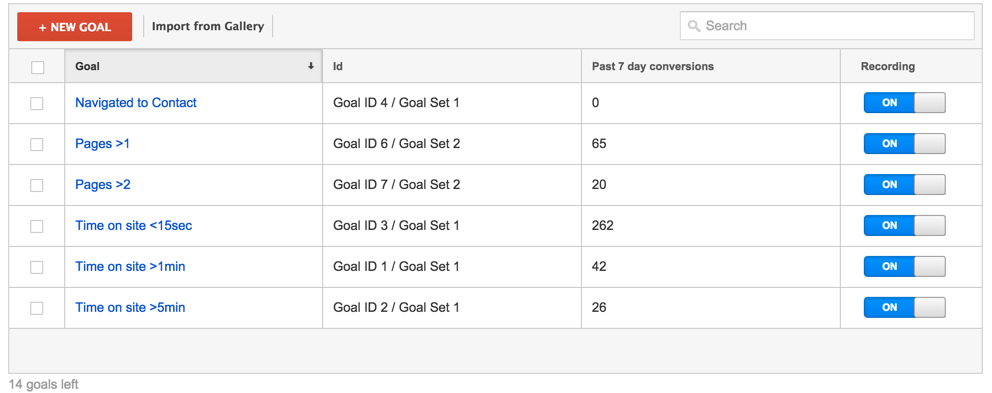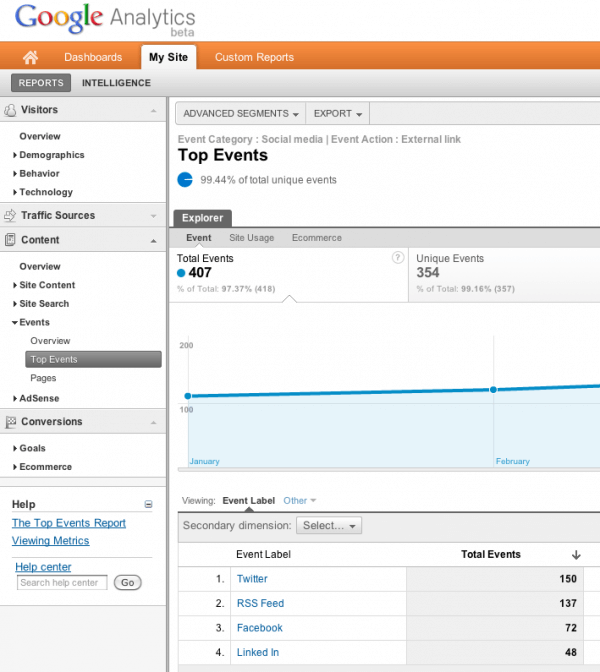Discover What Data Is Google Analytics Goals Unable to Track
Discover What Data Is Google Analytics Goals Unable to Track
Blog Article
Unveiling the Blind Attractions: Recognizing What Google Analytics Goals Can not Measure
In the world of digital analytics, Google Analytics stands as a powerful device for tracking and examining on-line user interactions. Recognizing what Google Analytics goals can not measure is vital for acquiring a thorough view of individual behavior and involvement.
User Habits on External Operatings Systems
Understanding exactly how customers communicate on external systems is essential for enhancing online strategies. External systems, such as social media sites networks, reference websites, and on-line discussion forums, play a considerable duty in driving traffic to a company's web site. By assessing individual habits on these platforms, services can acquire important understandings into the performance of their advertising and marketing efforts and the preferences of their target audience.
One key element of individual actions on exterior platforms is the reference source. By tracking where the individuals are originating from, businesses can recognize which platforms are driving the most traffic to their web site. This details can aid companies assign their resources better, concentrating on the systems that generate the best outcomes.

Offline Conversions and Interactions
Analyzing individual habits on exterior systems offers beneficial understandings right into online strategies; nonetheless, taking into consideration offline conversions and interactions is equally necessary for a thorough understanding of a company's total efficiency. While Google Analytics succeeds at tracking on-line communications, it drops brief in recording the complete client journey that often consists of offline touchpoints. Offline conversions, such as in-store acquisitions or phone questions, play a substantial duty in lots of services' success. Overlooking these interactions can cause an altered view of the effectiveness of advertising and marketing campaigns and general company performance.

Acknowledgment Beyond Last Click
When delving right into the world of electronic advertising analytics, it becomes important to look beyond the single touchpoint of the last click for a much more thorough understanding of acknowledgment. While Google Analytics gives beneficial understandings right into customer habits, depending entirely on last-click attribution can be limiting - what data is google analytics goals unable to track. Attribution models that go beyond the last click provide a much more nuanced view of the client journey, considering all the touchpoints that lead to a conversion
Attribution past the last click enables online marketers to assign credit report to various communications along the conversion path, giving a more clear image of the efficiency of different advertising and marketing channels. By exploring multi-touch acknowledgment versions such as straight, time degeneration, or position-based attribution, organizations can better assign their advertising spending plans and optimize their strategies for go to my blog optimal effect.
Recognizing the impact of each touchpoint in the conversion procedure is vital for making informed choices and making the most of ROI. By accepting acknowledgment past the last click, companies can get much deeper insights into customer actions and customize their advertising initiatives more successfully.
Cross-Device and Cross-Browser Monitoring

Similarly, cross-browser monitoring complements cross-device monitoring by catching customer behavior as they change between different internet internet browsers. Understanding how individuals connect with websites on numerous internet browsers can assist online marketers maximize their on the internet experiences to guarantee uniformity and performance throughout various platforms.
Qualitative Data and User Intent
Recognizing individual intent via qualitative information evaluation is critical for establishing targeted digital advertising strategies that resonate with the needs and choices of the target audience. Qualitative information supplies understandings into the 'why' behind customer actions, clarifying inspirations, emotions, and preferences that measurable data alone can not record. By evaluating customer comments, comments, and communications, marketing professionals can reveal useful info about user intent, permitting them to customize their messaging, material, and offerings to better line up with what their audience is looking for.
Qualitative data also aids in comprehending the context in which individuals engage with a web site or app. This contextual understanding enables marketers to develop more appropriate and customized experiences, eventually driving higher involvement and conversion rates. By diving into customer intent with qualitative data evaluation, companies can gain a much deeper understanding of their target audience, bring about a lot more effective advertising strategies that meet individuals' demands and assumptions.
Conclusion
Finally, Google Analytics goals have restrictions in measuring customer behavior on exterior platforms, offline conversions, attribution past last click, cross-device and cross-browser monitoring, and qualitative data connected to you can try here user intent. what data is google analytics goals unable to track. It is very important for companies to be mindful of these blind spots in order to supplement their data evaluation with various other devices and techniques to obtain a more detailed understanding of their audience and boost their overall digital marketing approaches
By evaluating individual actions on these platforms, companies can get beneficial insights into the effectiveness of their marketing efforts and the preferences of their target audience.
Analyzing user behavior on exterior platforms offers important insights into on-line strategies; however, taking into consideration offline conversions and interactions is equally critical for an extensive understanding of a business's general efficiency.In digital advertising analytics, relocating beyond last-click attribution to check out cross-device and cross-browser monitoring is essential for obtaining an all natural understanding of individual interactions throughout various systems and tools. By examining customer responses, remarks, and communications, marketing experts can discover useful details concerning user intent, enabling them to tailor their messaging, web content, and offerings to much better line up with what their audience is seeking.
By delving into customer intent via qualitative information analysis, organizations can get a much deeper understanding of their target audience, leading to a lot more efficient advertising look at this site methods that satisfy users' expectations and demands.
Report this page